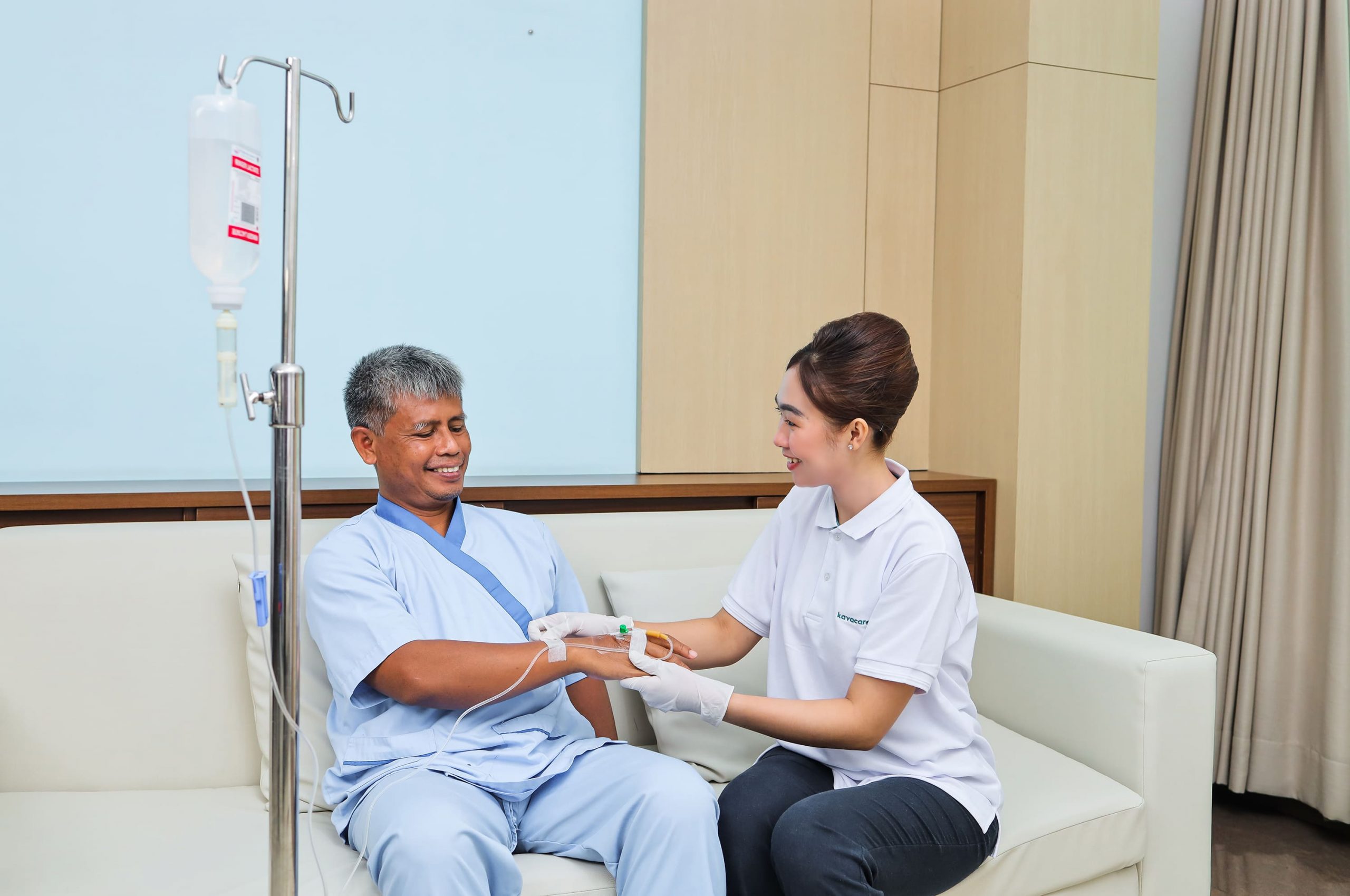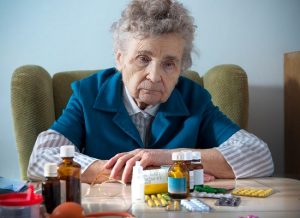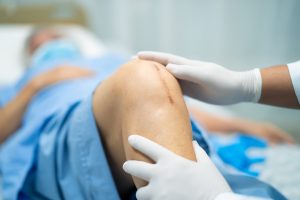Old age is synonymous with reduced quality of life due to the effects of aging. Old age is also closely linked to the occurrence of various health problems or diseases that affect the quality of life. One of them is Parkinson’s disease.
What Is Parkinson’s Disease?
Parkinson’s disease is a chronic disease associated to aging. The name Parkinson is taken from the name of British physician James Parkinson who first described the disease to the public in 1817. Medically, Parkinson’s disease is a chronic, progressive, degenerative neurological disease. As a neurological disease, Parkinson’s disease attacks the nervous system.
Meanwhile degenerative, chronic, and progressive are the nature of this disease. This means that Parkinson’s disease occurs due to a decline in the function and condition of the organs of the body with age, happens gradually, and will most likely continue to worsen over time.
Parkinson’s disease is characterized by a number of symptoms, including shaking, particularly in the hands, muscle stiffness, slowness of movement, slurred speech, and decreased balance and body coordination. There are also signs and symptoms that are not related to movement, such as anxiety disorders, frequent daydreaming, depression, and frequent urination.
Here is a typical pattern of progressive progression of Parkinson’s disease.
Stage 1: the symptoms seem mild and do not interfere with daily activities. Tremors and other movement disorders are found on one side of the body. Posture, gait, and facial expressions change.
Stage 2: the symptoms worsen. Both sides of the body experience tremor, stiffness, and other movement disorders. Daily work can still be done, but it will take more time.
Stage 3: characteristic of this stage is loss of balance and slower movement. The symptoms begin to interrupt activities such as dressing and eating.
Stage 4: the individual may need an assistive device to walk. He/she is no longer independent and needs the help of others to carry out their activities.
Stage 5: the legs become stiff so it is almost impossible for the patient to stand or move without a wheelchair. The patient needs round-the-clock care and assistance.
In addition to Parkinson’s disease, the elderly are prone to dementia. Many patients with Parkinson’s disease later develop this memory disorder.
How Do We Have Parkinson’s Disease?
Parkinson’s disease develops because nerve cells are lost or damaged. However, the exact cause of the damage is unknown. These cells work to produce a chemical called dopamine that sends excitatory signals between nerve cells in the brain to control body movement.
Without adequate dopamine, the nerves in the brain that control movement cannot function properly. When nerve cell damage reaches 80%, the first symptoms of Parkinson’s disease appear. These symptoms will continue to worsen as dopamine levels in the brain decline. Until now, researchers are still trying to figure out what is causing the nerve damage. Two factors suspected of having an influence are genetic and environmental.
Some cases of Parkinson’s disease appear to be hereditary and there are specific genetic mutations. However, in most cases, the disease is not transmitted from parent to child. Many researchers believe that Parkinson’s disease is caused by a combination of genetic and environmental factors, including exposure to toxic substances.
What to Do to Prevent Parkinson’s Disease?
The exact cause of Parkinson’s disease is unknown, but there are a number of preventative measures recommended by experts. For example, combining an active lifestyle and healthy eating with a balanced diet. Some health experts claim that the impact of this chronic disease, including dementia, can be reduced by regular physical activity, especially exercise.
Recommended exercises to prevent Parkinson’s disease include aerobics, resistance training, balance training, and body function exercises. The practice of creativity is also said to help prevent Parkinson’s disease, such as painting, playing some musical instruments, writing stories, and doing crafts.
What to Do for the Treatment?
So far, there is no laboratory test method or blood test that can be used to diagnose non-genetic Parkinson’s disease. Doctors usually make a diagnosis by reviewing the patient’s medical history and performing a neurological exam. If the symptoms improve after the patient takes the medicine, this also indicates that the patient has Parkinson’s disease.
Therefore, the patient should always consult a doctor to determine if he/she has Parkinson’s disease. The doctor will give the patient medication and take other medically necessary actions if the test results show that he/she has the chronic condition. Because there are a number of other degenerative diseases similar to Parkinson’s disease, getting a diagnosis from a doctor is the main step to receiving treatment.
Different Types of Medications for Parkinson’s Disease, Which One to Choose?
There are several medications for people with Parkinson’s disease. The goal of this treatment is to increase dopamine levels in the brain, improve nerve cells that work to send excitatory signals between nerve cells in the brain, and help control symptoms that are not related to movement.
The following are examples of medications commonly prescribed to patients with Parkinson’s disease:
- Levodopa to help nerve cells produce dopamine
- Carbidopa to reduce the side effects of levodopa, such as nausea and vomiting, restlessness, and low blood pressure
- Dopamine agonist to stimulate the production of dopamine in the brain
- Enzyme inhibitors to slow down the enzyme that breaks down dopamine in the brain
- Amantadine to help reduce uncontrolled movements
- Anticholinergic drugs to reduce tremors and muscle stiffness
The doctor will help suggest medications that Parkinson’s disease patients can choose from depending on their condition. If the drug has been administered, the patients must comply with the procedure for use prescribed by the doctor. For example, the use of levodopa should not be stopped abruptly without consulting a doctor because there are serious side effects, such as shortness of breath or inability to move limbs.
When Is It Necessary to Consult A Doctor?
Parkinson’s disease develops slowly. If someone has been diagnosed with Parkinson’s disease by a doctor, he/she should have regular medical checkups. Health examination checks are necessary to assess the patient’s condition and see the effect of the current treatment.
In some cases, the doctor may recommend surgery if, based on the examination checks, it turns out that the patient’s condition does not improve. The surgery aims to install a device capable of sending electrical signals to the brain to control movement. Therefore, follow the health examination checks schedule as recommended by the doctor so that the patient’s condition can be monitored regularly.
What Can Be Done to Live Comfortably with Parkinson’s Disease?
Although Parkinson’s disease is an incurable chronic disease, patients can still maintain their quality of life with proper medical treatment. The key to living comfortably with Parkinson’s disease is to follow the doctor’s recommendations based on the results of the health examination checks.
Recommendations typically include taking medications as prescribed, eating healthy foods and maintaining a balanced diet, trying to be as active as possible, and pursuing therapies such as physiotherapy, occupational therapy, and speech therapy, if necessary.
It’s also important to contact a doctor if the individual shows symptoms of depression, anxiety, or other mental health issues that often come with Parkinson’s disease. This mental problem has the potential to make life more uncomfortable. Parkinson’s disease patients also greatly need family support to maintain their quality of life. For doctor visit, doctor tele-consultations and home nursing services, please contact Kavacare Support.



